Do you know that you have to follow HACCP principles if you want to work in the food industry? Yes, your food business needs to follow 7 basic HACCP principles to keep the food fresh, safe and hazard-free.
For any restaurant, bakery, café and food factory, maintaining hygiene is the topmost priority. To ensure the health and safety of human beings, maintaining HACCP rules are mandatory. People are more aware of food safety now than ever. The Food Standards Agency (FSA) is continuously monitoring food businesses to ensure food safety. Food reviewers are on the go, judging every aspect of food services, and hygiene comes first on their list.
This blog contains knowledge about food safety and HACCP principles that everyone running a food business must know about.
What is HACCP?
When it comes to eating or drinking, we want our food to be clean, hygienic and hazard-free. We also want to know if the food that we are about to consume will cause any allergic reaction to our body. This is specifically important when we are consuming packaged or restaurant food. That is where HACCP comes in.
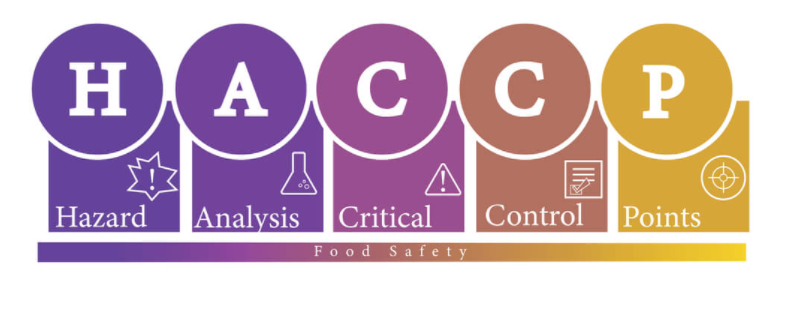
What is the HACCP full form? The HACCP stands for Hazard analysis and critical control points. HACCP is an international system that puts rules and regulations on a food business in order to maximize food safety. It is a food management system that tries to control food hazards.
To be more specific, it is a systematic protection approach to ensure food safety. It takes into account the different ways food hazards can occur. Like risk due to biological, chemical, and physical hazards that may happen during production processes. These hazards can cause the food products to be unsafe, and HACCP designs ways to reduce these risks to a safe level.
You can apply the HACCP principles and system in all stage food production chains. You can apply HACCP to each step from food production to the processing, packaging, and distribution process.
Function of HACCP
Simply speaking, HACCP’s goal is to identify what and where things can go wrong during food production. Furthermore, finding out where and when it is critical that we control it for food safety. The 7 principles of HACCP helps to find and minimise these problems. The application of a Food Safety Management System based on these principles is a legal requirement. It is important to note that we must document our HACCP and keep records to demonstrate that it is working effectively.
Here is what HACCP involves:
- 1. Looking closely at what you do in your food business and where your business might go wrong to ensure food safety.
- 2. Finding out any critical control points. It refers to the areas a food business needs to focus on to ensure those risks are removed or reduced to safe levels.
- 3. Making decisions on what action you need to take if something goes wrong.
- 4. Ensuring that your procedures are being followed and are working.
- 5. Documenting everything to show your procedures are working.

History of HACCP
The HACCP food management system was developed in 1960. In collaboration with Pillsbury, U.S. NASA wanted to ensure healthy, hygienic and pathogen-free food that will have extended shelf-life properties to travel in space. Because if astronauts fall sick during space travel, it will put their lives and the mission at stake.So, they had to ensure the food will last long without rotting. Also, they will not carry any form of pathogen, allergen or harmful element. This is where the idea of HACCP began.
From then on, HACCP earned international recognition as a traditional inspection method which turned into a modern, science-based food safety management system. Now, a lot of food manufacturers, vendors, and business holders uses the HACCP framework as their main food safety management system and for GFSI inspection requirements.
If you are running or plan on running any kind of food business in the UK, you have to –
- Design a HACCP food plan for your business, depending on the HACCP principle.
- Ensure the food you are making is safe to eat under Regulation (EC) No 178/2002 Article 14.2.
This has become a law because it protects people from hazards and risks from unsafe and foodborne illnesses. Therefore, Article 5 of Regulation (EC) 852/2004 strictly instruct food suppliers to plan, execute and maintain HACCP principles regularly.
HACCP Hazard
A hazard is anything that will probably cause illness or harm.
The FSA describe a food hazard as “something that could make food unsafe or unfit to eat.”
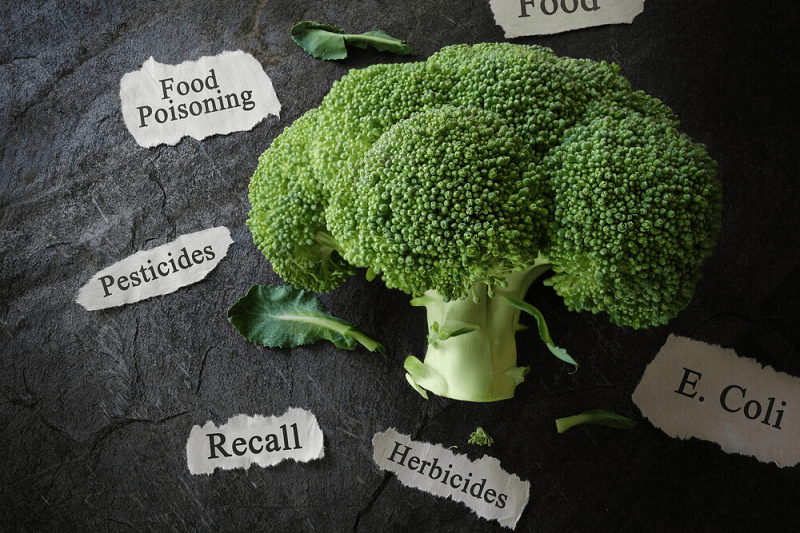
There are 4 kinds of food hazards that you need to consider in HACCP.
1. Microbiological Hazards
Microbiological hazards are pathogens or germs like bacteria, yeasts, fungus, and viruses that will cause illness after consumptions.
2. Chemical Hazards
Chemical hazards are water contamination, food contact materials, cleaning agents, pest control substances, contaminants, pesticides, biocides, and food additives that can be present in foods without inadequate monitoring. These chemicals can be acidic, harmful, or even burn and react with the body badly.
3. Physical Hazards
Physical hazards are solid and jagged materials like glass, packaging, jewellery, insects or insect droppings, screws or pins etc.
4. Allergens
Allergens are foods that will cause severe reactions to someone with specific food allergies. 2 million people in the UK suffer from food-related allergies. There are risks related to the unintended presence of one or more of the 14 EU listed food allergens.
The 14 allergens are celery, cereals containing gluten like barley and oats. Crustaceans food like prawns, crabs and lobsters, eggs, fish, lupin, and milk. These 14 also includes molluscs like mussels and oysters. Furthermore, mustard, peanuts, sesame, soybeans, sulphur dioxide and sulphites if they are at a concentration of more than ten parts per million. Finally, tree nuts like almonds, hazelnuts, walnuts, brazil nuts, cashews, pecans, pistachios, and macadamia nuts.
Key Definitions to Understand HACCP
Here are some of the key terms you may come across while understanding HACCP principles and making a HACCP plan for your food business.
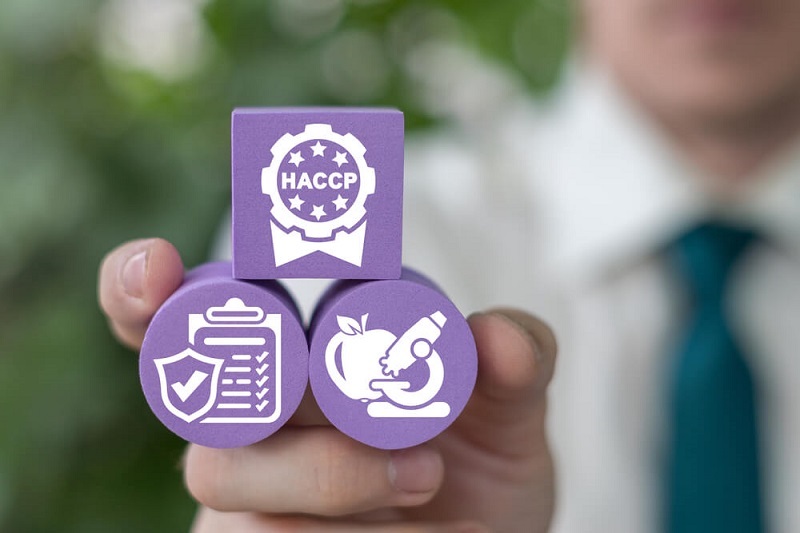
HACCP -A systematic way to identify, evaluate, and control food safety hazards.
Critical Control Points (CCP) – It is the point at which a prevention measure can be applied and is essential to stop or eliminate a food safety hazard or reduce it to an acceptable level.
Critical Limit – It is the maximum or minimum value to which biological, chemical or physical limits must be controlled at a CCP.
Deviation – It is the failure to meet a critical limit.
HACCP Plan – It is a document depending on the principles of HACCP and which describe the procedures a food business will follow to keep hazards away.
HACCP System – The result of the application of the HACCP Plan.
HACCP Team – The group of people who are on duty for developing, applying and maintaining the HACCP system.
Decision Tree/ Flow Diagram – The goal of a decision tree or flow diagram is to help the judgement of the team and help you to confirm if the hazard needs more food safety controls. In addition, decision trees help you determine whether a particular step is a CCP.
What is the Importance of HACCP?
According to a scientific review by the FSA, every year around 2.4 million people are affected by foodborne illness in the UK. This number is higher than the 2009 estimate of about 1 million people.
Due to insufficient measures for not maintaining proper hygiene in food ingredients or the environment to make food, the number of foodborne illnesses keeps increasing. This is causing harm to people and making them suffer. Germs like bacteria, viruses, fungus and any other kind of harmful pathogen when it gets into the body can cause illness that can become serious very rapidly. The HACCP principles take a stance against it to make food businesses aware of taking necessary steps against food hazards.

Furthermore, HACCP also considers any allergic elements on food that may cause reactions when an allergic person consumes it. Especially for avoiding anaphylactic shocks, which people can do if they know what they are eating exactly. For this, food producers, restaurants chefs, and waitresses must mention what ingredients they use in their food in labelling and menus. Therefore, a part of HACCP is also correctly labelling and forming a menu well-informed menu.
Therefore, HACCP principles have become very important for the food industry in order to monitor potential food hazards and decrease the risk as much as possible. Also, the business can prove that they have food safety measurements in place, and it is absolutely safe to eat their food.
In order to incorporate HACCP principles, it involves a good level of science and technology to monitor significant food risks. It helps to detect microbiological, chemical and physical contamination in the food and take adequate action against them. As a result, implementing a HACCP Plan in your business can build your business reputation among customers.
What are the HACCP Principles?
Hazard Analysis and Critical Control Points, HACCP abides by 7 main principles. The principles are more like step-by-step procedures to conduct HACCP in your food business. Below we are going to explain each principle at length.
- 1. Conduct Hazard Analysis
- 2. Identify the Critical Control Points
- 3. Establish Critical Limits
- 4. Establish a Monitoring System
- 5. Establish Corrective Action
- 6. Verification
- 7. Documentation
These seven HACCP principles are explained below.
HACCP Principle 1: Conduct a Hazard Analysis
The first HACCP principle is hazard analysis or finding out the risk. The purpose of doing Hazard analysis is to find and develop a list of hazards that will significantly cause injury or illness if it is not in control. The hazard which is not likely to occur would not require concern within a HACCP plan.
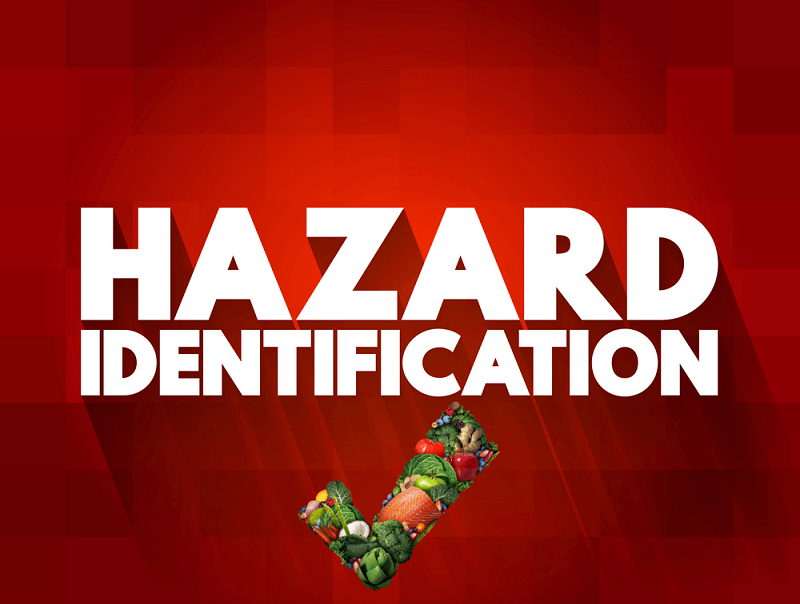
During hazard analysis, you have to consider the ingredients and raw materials, processing, food storage and distribution, and also the final preparation and use by the consumer. Therefore, hazard analysis is the important first step in implementing HACCP principles effectively.
If the hazard analysis isn’t done efficiently, and you can’t detect the hazards that need to be in control within the HACCP system, the plan will be pointless even if you follow the other HACCP principles.
The hazard analysis and detection of control measure complete three objectives:
- 1. The existing food hazards and associated control measures for them are identified.
- 2. The analysis may find out necessary modifications to the food processing or production, so that product safety is more assured or improved.
- 3. The hazard analysis gives the foundation for determining CCP in Principle 2.
The hazard analysis can happen in two stages. Firstly, you and your team can identify hazards through a brainstorming session. In this session, the HACCP team can go through all the ingredients, procedures, equipment used, the final products, how the business store and distribute them.
On the basis of this, the team makes a list of potential hazards that can take place at any time.
In stage two, the team conducts hazard evaluation. Here they decide which potential hazard they must address in their HACCP plan. They evaluate each potential hazard depending on the seriousness and how likely it may occur.
HACCP Principle 2: Identify the Critical Control Points
We have come across a short definition of Critical Control Points, CCP. So the first principle, hazard analysis, leads to the second principle, finding out the critical control points for each hazard that you found out using the first principle.
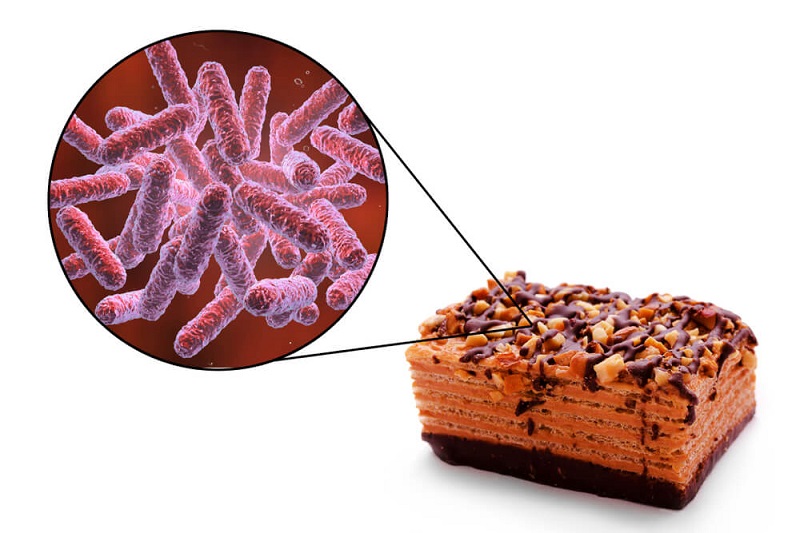
CCP is the particular point during the food manufacturing process where a hazard is likely to occur, which you can control with certain measurements. It is the particular point at which you can control or eliminate a hazard. The potential hazards that are likely to cause illness or injury if they are not in control must be taken into consideration during determining CCP.
Moreover, CCP is the process to find and take the right prevention measures. A CCP may help to manage more than one food safety hazard. Similarly, a number of CCP is necessary to control a single hazard. The processing steps determine the total number of CCP and the level of food safety control needed.
For example, if you are cooking meat that needs to be cooked at a certain temperature so that it doesn’t stay raw and the germs are also killed. Here, the CCP is the point at which you decide if the meat is cooked and safe to eat.
Complete and accurate detection of CCP’s is vital for controlling food safety hazards. CCP is located at any step of food processing at which you can either prevent, remove, or reduce the hazard to a tolerable level.
More examples of CCP are thermal processing, pH level, chilling, testing ingredients for chemical residues, product formulation control, and testing product for foreign body and contamination. So once again, identifying CCP is an important part of the HACCP principles, and it needs to be correct so that the whole plan works.
HACCP Principle 3: Establish Critical Limits
The third of HACCP principles is to establish critical limits for each critical control point. A critical limit is an exact value to which a physical, biological, or chemical hazard must be controlled. While CCP separates safe food from unsafe food and also stop, eliminate, or reduce the hazard to an acceptable level. On the other hand, critical limits are usually numerical values based on scientific findings.
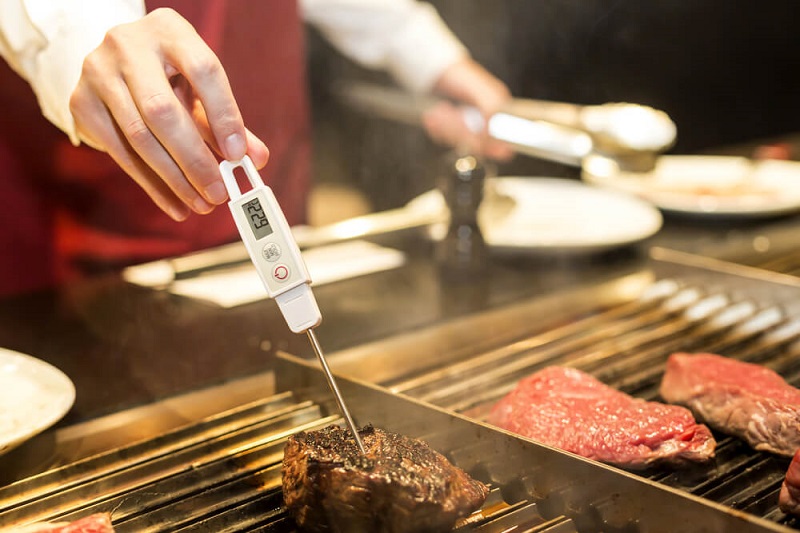
At a particular CCP, a critical limit is a value that decides if it is safe or unsafe operating conditions for any food. A critical limit has to be observable, measurable and subject to “real time” monitoring. There can be three kinds of critical limits. They are as follows –
1. Chemical Critical Limits
- Water activity (Aw)
- pH
- Salt content
- Mycotoxin levels
- Absence of allergens
2. Physical Critical Limits
- Temperature
- Dried weight
- Time
- Absence of metal
- Viscosity
- Moisture content
3. Procedural Critical Limits
Supply of raw beef from an approved butcher house that has specific controls in place to minimise the hazard or contamination of meat that will be eaten raw or somewhat cooked.
A combination of factors is commonly used as critical limit at a CCP. They have to be separately measurable.
For example, in order to control Salmonella in raw chicken during the cooking step (CCP), the critical limit must be 70°C for 2 minutes. So here, the time and temperature both are critical limits, and you need to achieve both.
HACCP Principle 4: Establish a Monitoring System
After the CCP and critical limit is identified, the next principle is to form a monitoring system. Through the monitoring, you need to measure and observe the CCP to find out if the food processing team is achieving the critical limit or not. Monitoring is also essential to find out any loss of control and take corrective measures for it.
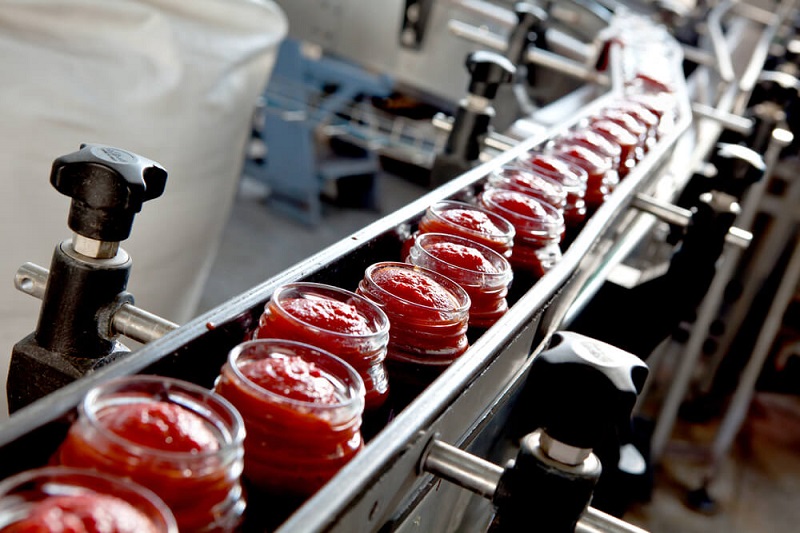
You and your HACCP team have to form a monitoring procedure for all hazards, CCP, and critical limits. All staff who are involved must have training on the monitoring procedure. You need to take care of many aspects while monitoring.
Firstly, monitoring is done by taking appropriate measurements or through observations. For example, measuring the temperature or observing the colour change.
Secondly, monitoring procedures may include in-line or off-line systems. In-line systems involve the taking of measurements during the process, like using a thermometer to check the temperature. Off-line systems are taking samples for quick testing. Like for determining pH or Aw using calibrated meters. The monitoring equipment has to be calibrated and must work properly. All monitoring equipment must be calibrated and working correctly.
Thirdly, the frequency of monitoring is also important and depends on several factors. It depends on the nature of the product, process, and production. It also depends on the history of the previous check.
Hence, the monitoring step ensures the identification of the problems and the steps taken to assure that the problem will not occur again.
HACCP Principle 5: Establish Corrective Action
Hazards can happen willingly or unwillingly. Deviation in food processing can happen with proper measures taken and even after establishing control. Corrective actions are measures taken in case any deviation occurs. And corrective actions are a set of planned actions that should be carried out by nominated persons.
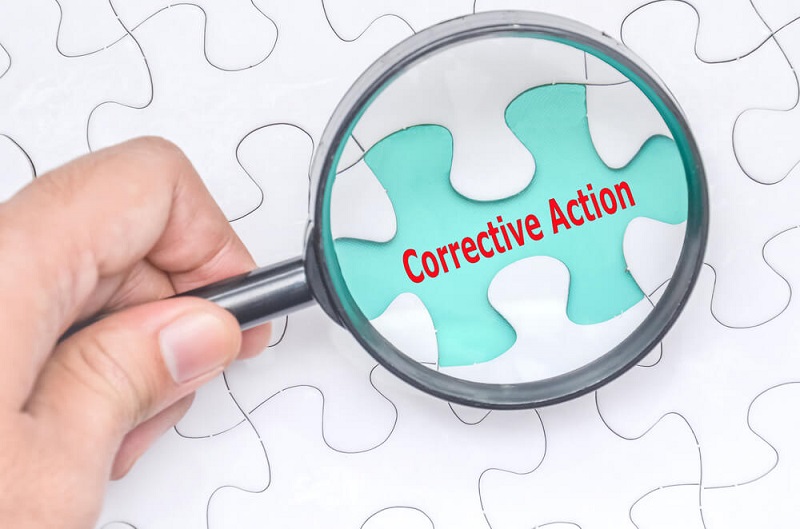
The HACCP team will find the steps to prevent potentially hazardous food from getting into the food chain. They will also determine the steps that are needed to correct the process. This usually involves finding out the problems and the steps taken to ensure that the problem will not happen again.
There are two kinds of corrective action. Firstly, corrective actions you should take to prevent loss of control at a CCP. Secondly, corrective actions to be taken when loss of control at a CCP has been identified.
HACCP Principle 6: Verification
The sixth of HACCP principles is verification. This principle confirms that the HACCP plan will produce safe food for the final consumer if it is followed properly. The process of verification has three main components, which are validation, verification, and review.
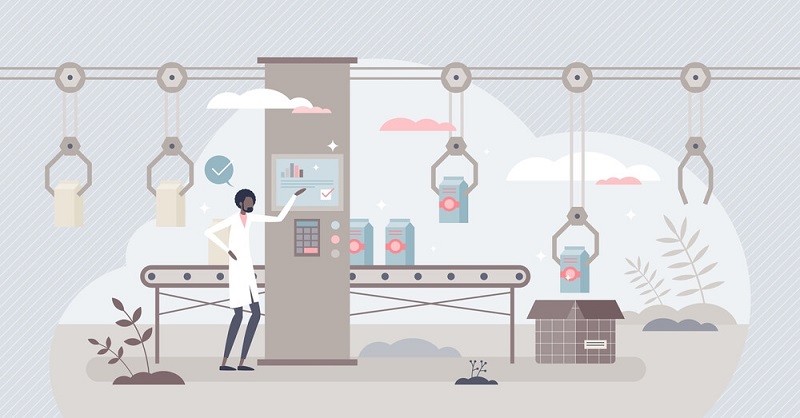
Validation is the way in which you can show that all the judgements and assumptions you make are based on scientific facts. You have to prove that the way you used to identify and evaluate relevant hazards, find controls, correctly select critical control points, establish effective monitoring and corrective action procedures are all scientifically correct.
Verification is taking sufficient steps to ensure that the procedures set out in the HACCP plan are working in practice. In particular, they have to make sure critical limits are enough to ensure that the identified hazards are in control at a CCP. You must do verification all the time and record them as well.
Finally, the HACCP plans needs to be up-to-date all the time and go through changes if necessary. Therefore, you and your HACCP team need to review the plan regularly and keep documentation of it.
HACCP Principle 7: Documentation
Finally, the last step and HACCP principle is to keep a record of each and every step of the HACCP program. Firstly, it acts as proof that your food business runs by taking all the necessary food safety measures. Secondly, the documentation acts as a guideline so that everyone in the business can stay informed about the HACCP program and what to do to ensure food safety at any point.
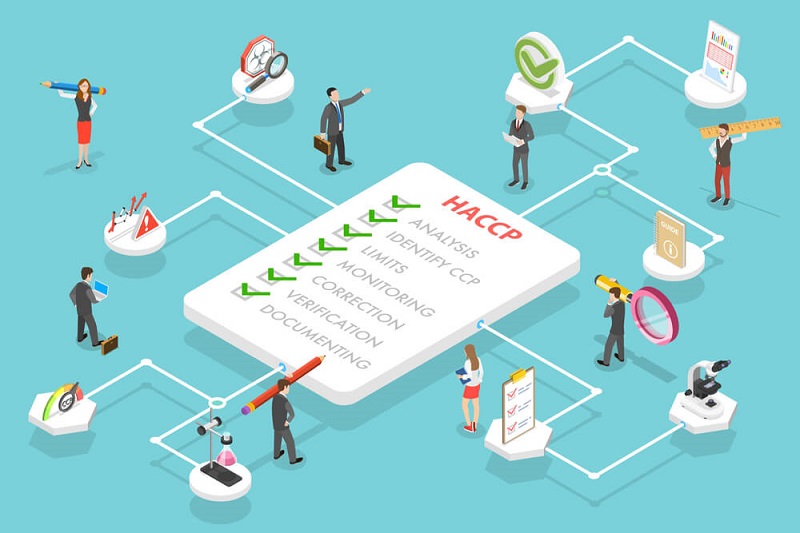
Showing details that HACCP principles have been correctly applied as a requirement of the law and that records are kept properly may give evidence of due diligence in the event of legal action. Documentation and record-keeping should be:
- 1. To the point and suitable with the nature and size of the operation.
- 2. Adequate to help the business to verify that the HACCP controls are in place with proper maintenance.
Download a Free Poster of 7 HACCP Principles
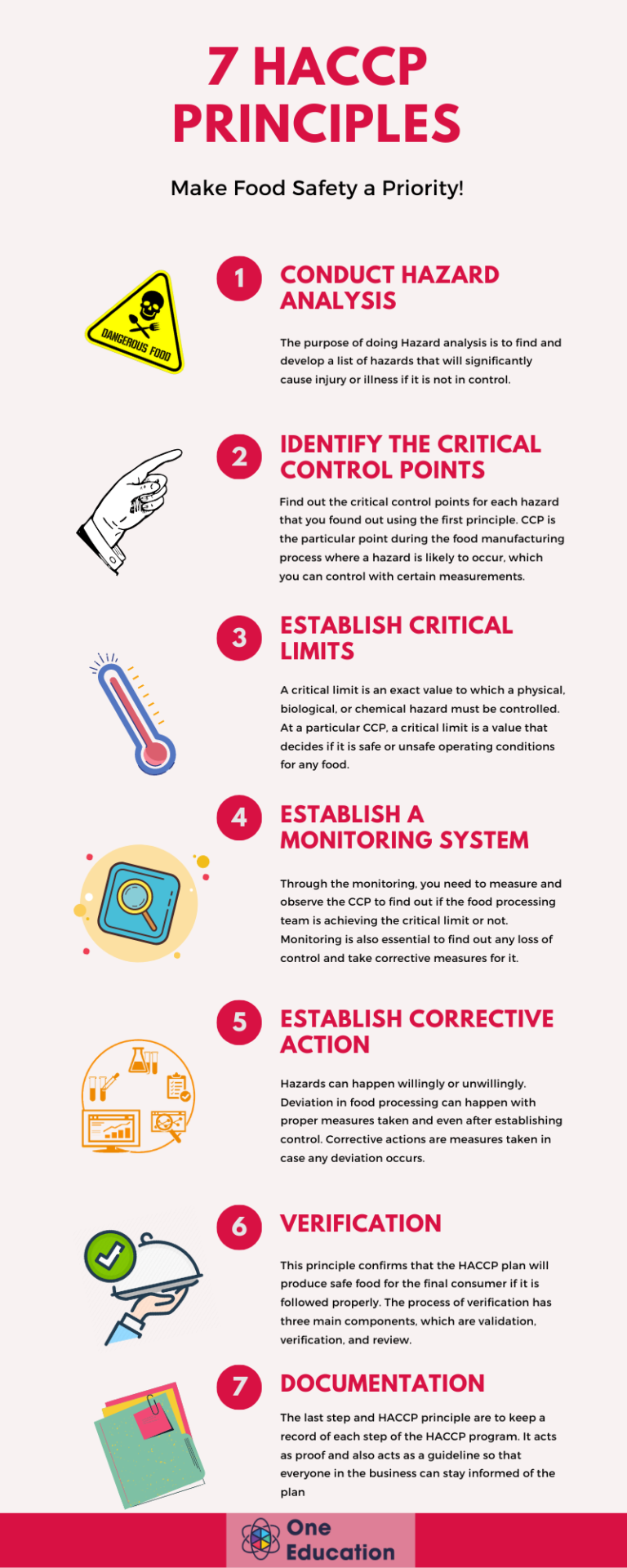
What is the HACCP Principle Application Guideline?
You can use HACCP in all segments of the food industry. You can include HACCP in each step, from harvesting and growing, processing to manufacturing, distributing and merchandising to making the food consumption ready.
Here is the HACCP application guideline that you can follow.
Gather the HACCP Team
Creating an interdisciplinary HACCP team with every member having specific knowledge and expertise suitable for the product and process. The HACCP team is responsible for making the HACCP plan. Therefore, the team member must be multidisciplinary and include people from areas such as engineering, production, sanitation, quality assurance, and food microbiology.
Describe the Food and its Distribution
The first task of HACCP is to describe the food. They have to give a general description of the food, ingredients, and processing methods. Furthermore, the team has to describe the method of distribution, along with details on if the food is to be delivered frozen, refrigerated, or at normal temperature.
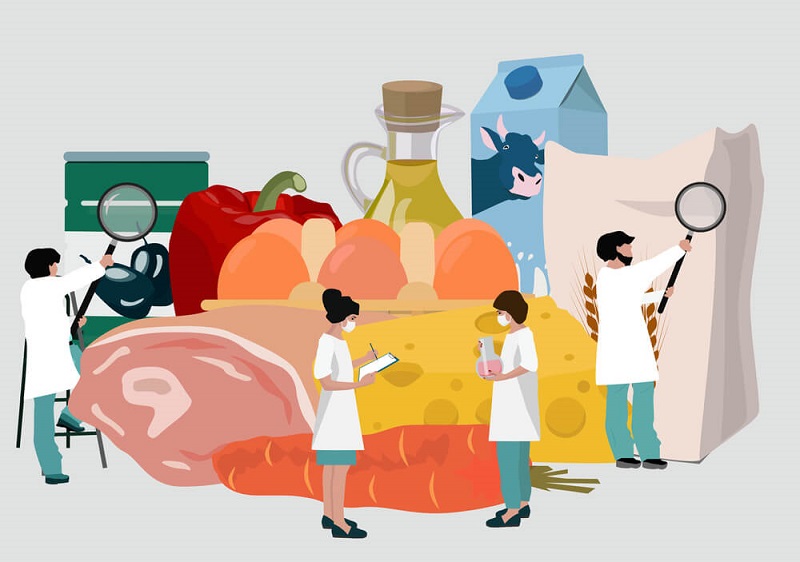
Describe the Intended Use and Consumers of the Food
The HACCP team needs to describe the normal expected use of the food. Here they have to explain the type of consumers who will be eating the food. For example, infants, immunocompromised individuals, the elderly, etc.
Develop a Flow Diagram that Describes the Process
HACCP needs to make a clear, simple outline of the steps involved in the process. It is known as the flow diagram. The flow diagram must include all the steps in the process which are directly under the control of the business. In addition, the flow diagram can also involve steps in the food chain which happen before and after the processing that occurs during manufacturing.
Verify the Flow Diagram
The HACCP team must perform an on-site review of the plan to verify the accuracy and completeness of the flow diagram. If necessary, the need to make modifications to the flow diagram and also keep a record of it. When these primary tasks are completed, you and your team must follow the HACCP principle and keep a record of it at all times.
Conclusion
The HACCP system is a great way to help ensure healthy foods for the public. With HACCP principles in action, there is a lesser chance of disease. Each and every step of HACCP principles, from detecting hazards to finding a CCP and critical limit to finding corrective action, contribute to making healthy food. Not only that, the verification and documentation principle helps make sure that nothing will go wrong.
To ensure food safety and build a food business full of reputation and standards, HACCP is a compulsory requirement. The HACCP principles ensure that the food that you serve is completely safe to consume. You can get a full HACCP Training to learn more and implement it effectively to see your food business thrive.
FAQs
What is the importance of the HACCP guidelines?
HACCP guidelines are crucial because they help identify and manage food safety risks systematically. By following these principles, businesses can prevent contamination, ensure product safety, and comply with regulatory standards, ultimately protecting consumers and maintaining trust in the food supply chain.
What would you do if you were implementing HACCP principles?
Implementing HACCP principles involves identifying potential hazards, assessing risks, and setting control measures. Regularly monitor these controls, maintain accurate records, and adjust procedures as necessary to ensure food safety.
What does HACCP help a business do?
HACCP helps businesses ensure food safety by identifying and controlling potential hazards during production. It minimizes risks and ensures products are safe for consumption.
What are the 7 points of a HACCP program in the correct order?
The 7 points of a HACCP program, in order, are:
1. Conduct a hazard analysis.
2. Determine the critical control points.
3. Establish critical limits.
4. Monitor the critical control points.
5. Establish corrective actions.
6. Verify that the system works.
7. Keep records.
Recent posts
- What are Functional Skills? From Theory to Practice
- What is the Modal in Maths? Mode, Modal, and Mean Explained
- How to Support People with Learning Disabilities?
- How to Be a Primary Teacher: Best Practices and Insights
- 21 Duties of a Health & Safety Officer You Must Know
- Collaborating with SENCOs: Best Practices for Teachers
- Top 6 Online Courses to Improve Your English Writing Skills
- Can You Reheat Chicken? Tips for Safe and Delicious Leftovers
- How to Set a Table: From Basic to Elegance
- AI Fashion: Transforming the Future of Fashion Design and Personalised Style







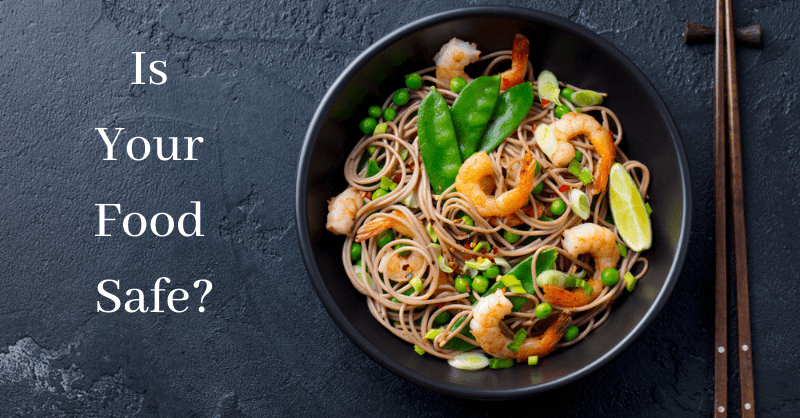
 November 16, 2023
November 16, 2023
















